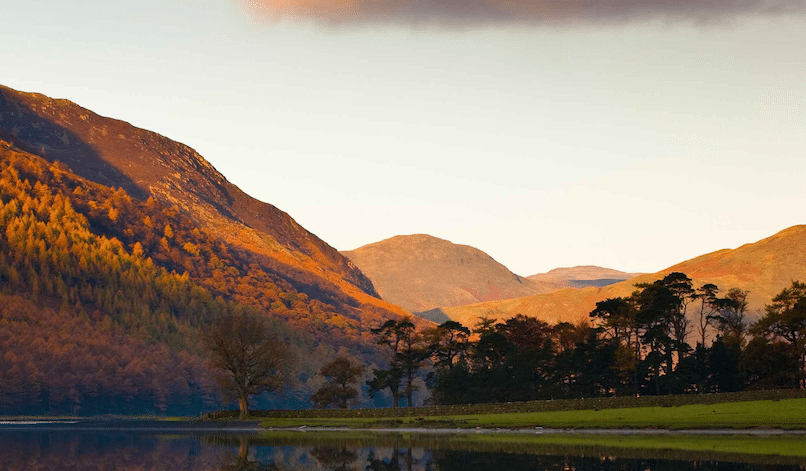Skift Take
Sometimes you have good luck and sometimes you have good timing. And sometimes you have both. Visit Britain's campaign already makes sense since the U.S. is the UK's most valuable source market. But many Americans were probably already mulling a UK trip because of the great exchange rate without the coaxing of a tourism board.
United States visitors are already the UK’s most valuable source market with 3.3 million visitors last year spending £3 billion ($3.6 billion, at the most recent exchange rate). That, coupled with the UK pound’s 31-year low against the U.S. dollar following June’s Brexit vote, is an attractive backdrop for launching a marketing campaign.
On the other hand, elements of the pro-Brexit campaign took on an anti-refugee and nationalistic tone, factors that didn’t paint the UK as an island of hospitality. But still: Bargain time in Britain.
Although Visit Britain planned and created its U.S.-targeted 365 Days of #OMGB campaign before Brexit, the organization can take advantage of a favorable exchange rate giving Americans a greater incentive to visit. The average U.S. visitor spends $1,125 (£922) during a visit — 50 percent more than the average visitor to the UK, according to Visit Britain.
The exchange rate factor dovetails with the campaign but isn’t its focus, said Angelique Miller, global director of creative partnerships at Expedia Media Solutions, which created the campaign and its microsite with Visit Britain.
“With the currency and the pound decreasing slightly, we’re trying to see how we can make that a positive thing for British tourism,” said Miller.
The exchange rate also makes a UK trip more economically worthwhile for other markets too, said Paul Gauger, Visit Britain’s executive vice president of the Americas. “The exchange rate is also great for Europe and also more affordable for Brazil as well. We know that people budget for their vacations and this just means that their money will go further.”
Many UK-based travel companies are concerned about their future because of Brexit, but they also realize the weaker pound will help fuel visits. ForwardKeys data show that travel bookings from the U.S. to the UK are up six percent year-over-year for October to December. Arrivals from China, however, show faster growth during the same period (up 24 percent year-over-year). But travelers made many of these bookings before Brexit and it will likely take until next year until the UK can attribute any increase in bookings to the vote.
The campaign, part of the UK government’s Tourism Action Plan, aims to highlight the entirety of what Britain has to offer and getting U.S. travelers to consider destinations beyond Greater London.
“The campaign is more about the sheer diversity of the country,” said Gauger. “People may know about Liverpool or Cambridge or Oxford but they don’t know how close cities are to each other. We’re a small country.”
Showcasing the UK as a year-round destination is another goal and is part of a multi-million pound, three-year partnership between Visit Britain and Expedia to market Britain to the U.S., the UK’s second largest visitor market. Visit Britain projects the campaign will bring $165 million (£135 million) into the UK economy during the next three years. The campaign also includes social media promotion and television commercials that will launch in U.S. markets in January.
In 2015, some 42 percent of U.S. visits to the UK were for leisure, 23 percent were for business and 26 percent were for visiting friends and relatives.
Moving Beyond London
Higher percentages of U.S. travelers visit London, Scotland, and Wales than the average inbound visitor. Last year 66 percent of U.S. visitors traveled to London, 33 percent to the English regions outside London, 13 percent to Scotland and three percent to Wales, compared to 51 percent, 42 percent, six percent and two percent, respectively, for the average visitor to the UK.
London clearly steals the show. “We definitely don’t want to discount London so it’s important that we don’t presume that we’ll get people to fly somewhere else,” said Miller. “We almost look at this as London-plus and we know London is a major hub. That said, our partnership is meant to drive incremental passengers to the UK whether that is London or other international hubs within the country.”
Making it convenient to book transportation, particularly rail travel, from London and to and from other cities is one of the campaign’s key aspects. “We drive on the opposite side of the road over here so it might seem daunting to an American to rent a car,” said Miller. “That’s why we launched a rail product on Expedia last month which we never had before. This is Expedia’s first rail product for the UK market.”
The rail product is available at expedia.co.uk and will be launching on expedia.com “shortly,” said Miller. “We will further roll out a product for the U.S. market for Amtrak that will happen further down on our roadmap.”
How U.S. Travelers Will See the Campaign
Expedia Media Solutions considers the campaign a beta launch because it is experimenting with how to best serve the campaign to travelers.
“Right now the campaign is based on what you’re searching for on Expedia.com and based on that we can serve you this content,” said Miller. “Say, for example, you’re searching for a flight to London, that’s how we’d know to show you the campaign. We’re testing and learning as to how to ensure that the platform itself is discoverable. For now it’s through placements on Expedia.com that would be targeted to your search behavior.”
The Daily Newsletter
Our daily coverage of the global travel industry. Written by editors and analysts from across Skift’s brands.
Have a confidential tip for Skift? Get in touch
Tags: brexit, expedia, Expedia Media Solutions, visitbritain
Photo credit: Visit Britain and Expedia Media Solutions have launched a campaign to highlight why U.S. travelers should visit regions across the UK. Pictured is a still from the campaign of the Cumbria region. Expedia Media Solutions
